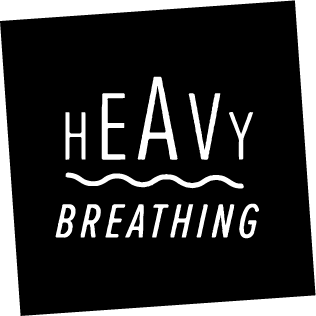January 20, 2020
Jean-Thomas Tremblay: Breath/Measure/Commons
Reuters/Getty Images
Heavy Breathing A/V presents Breath/Measure/Commons by Jean-Thomas Tremblay:
I am writing a book on aesthetic responses to a contemporary crisis in breathing. This social, political, and environmental crisis is typified by the increased pollution, weaponization, and monetization of air and breath, the consequences of which are unevenly distributed. Breath/Measure/Commons is an experiment that transposes the questions of exemplarity and generalizability I have been considering into the form of the meditation. Reading about other people’s breathing makes me aware of mine—but my breathing tells me very little about other people’s experiences. This is what I try to convey in a meditation that centers engagements with breathing within Black and Indigenous Studies: the limits of what breathing enables us to measure, or, put differently, how breathing registers the unevenness of the atmospheres we inhabit.
The track includes instructions for a creative exercise. Listen on your own or with others, indoor or outdoor. As long as there is an environment to be sensed.
Works Cited and Consulted:
- Crawley, Ashon. Blackpentecostal Breath: The Aesthetics of Possibility. New York: Fordham University Press, 2016.
- Gumbs, Alexis Pauline. “About.” Black Feminist Breathing Chorus, 2014.
- Parikka, Jussi. “The Sensed Smog: Smart Ubiquitous Cities and the Sensorial Body.” The Fibreculture Journal 29 (2017).
- Reagon, Bernice Johnson. “Coalition Politics: Turning the Century.” In Home Girls: A Black Feminist Anthology, edited by Barbara Smith, 356–368. New York: Kitchen Table Press, 1983.
- Richmond, Scott. Cinema’s Bodily Illusions: Flying, Floating, and Hallucinating. Minneapolis: University of Minnesota Press, 2016.
- Sharpe, Christina. In the Wake: On Blackness and Being. Durham: Duke University Press, 2016.
- Simmons, Kristen. “Settler Atmospherics.” Cultural Anthropology, November 20, 2017.
- Taylor, Dorceta E. Toxic Communities: Environmental Racism, Industrial Pollution, and Residential Mobility. New York: New York University Press, 2014.
- Tremblay, Jean-Thomas. “Aesthetic Self-Medication: Bob Flanagan and Sheree Rose’s Structures of Breathing.” Women & Performance 28, no. 3 (2018): 221–238.
- Tremblay, Jean-Thomas. “Feminist Breathing.” differences 30, no. 3 (2019): 92–117.

BIO
Jean-Thomas Tremblay is an assistant professor of English at New Mexico State University. Their scholarship in the environmental and medical humanities, literary and cultural studies, and feminist, queer, and trans studies, has been published in differences, Women and Performance, Criticism, Post45, New Review of Film and Television Studies, and Critical Inquiry. Their public writing has appeared in such venues as the Los Angeles Review of Books, Public Books, The Rambling, Full Stop, Arcade, Make Magazine, and Chicago Review.
Jean-Thomas' monograph in progress, Breathing Aesthetics, argues that breathing has emerged, since the 1970s, as a medium that configures embodiment and experience as effects of biopolitical and necropolitical forces. Within a crisis in the reproduction of life marked by the air's pollution, weaponization, and monetization, articulations of individual and collective survival and persistence must grapple with the management and dispersal of the risks of breath. Breathing Aesthetics surveys minoritarian contexts where the aestheticization of breathing generates medium-specific and historically, culturally, and environmentally situated tactics and strategies for living under precarity. Jean-Thomas is also editing, with Drew Strombeck, the collection Avant-Gardes in Crisis: Art and Politics in the Long 1970s.
More information on past and upcoming projects is available at jttremblay.wordpress.com.
